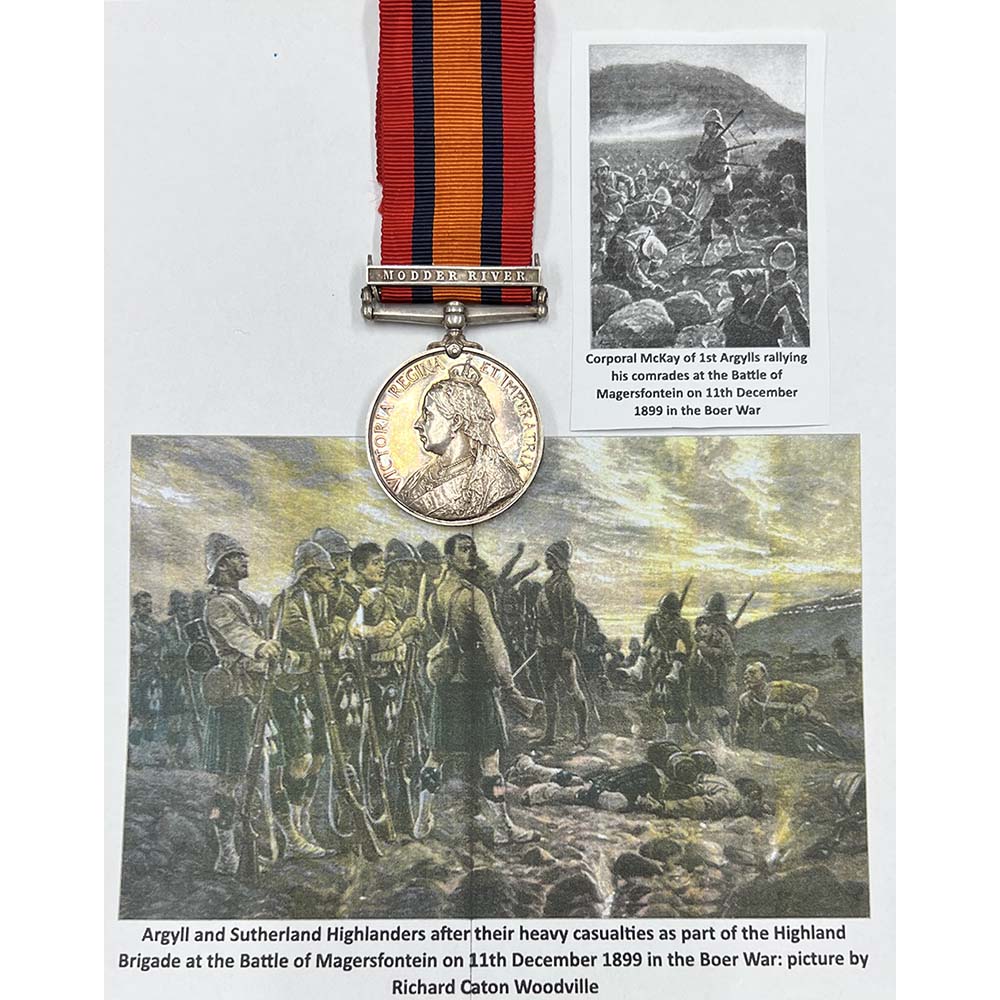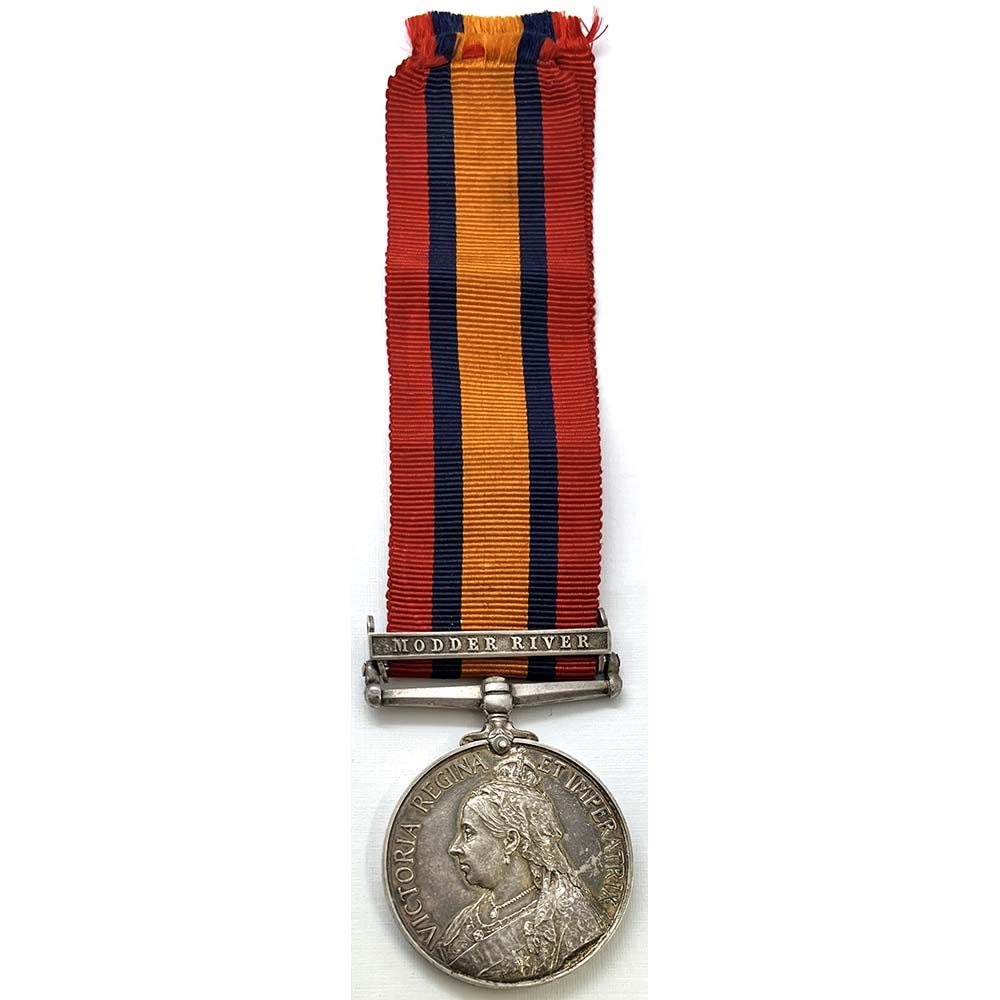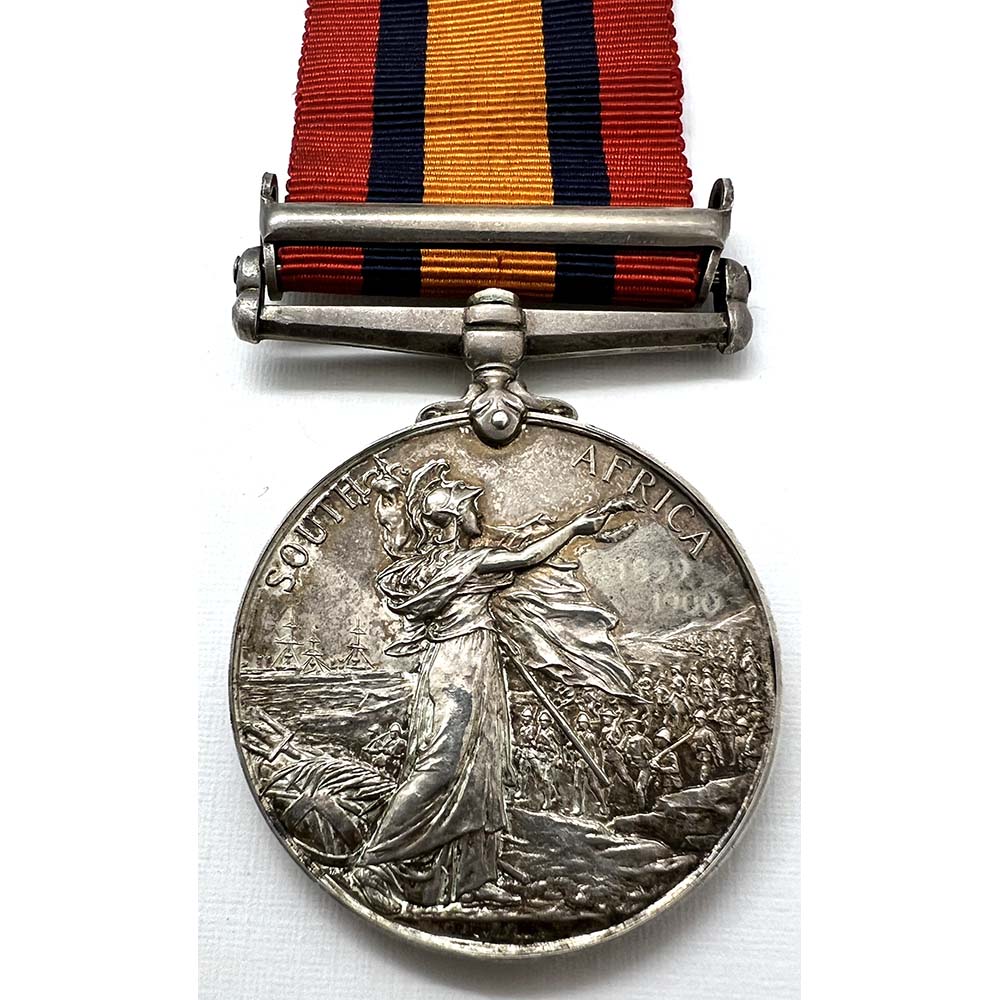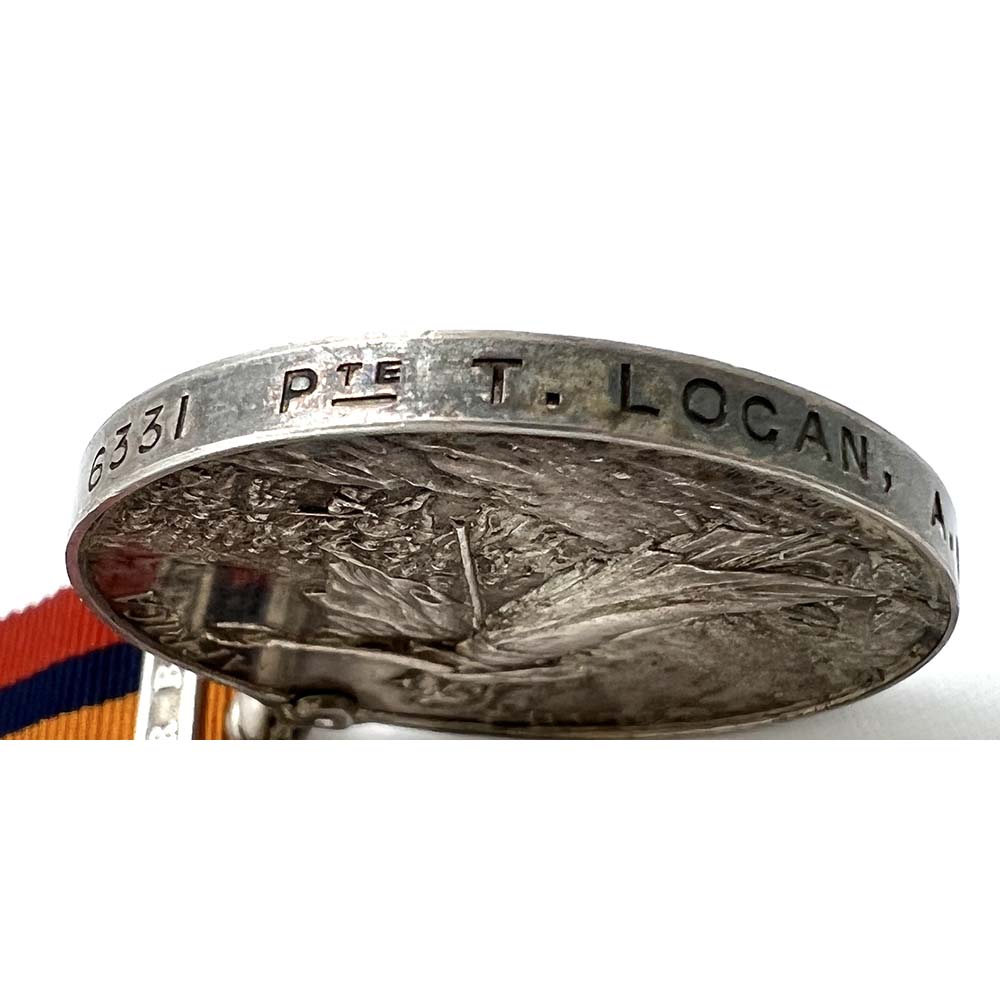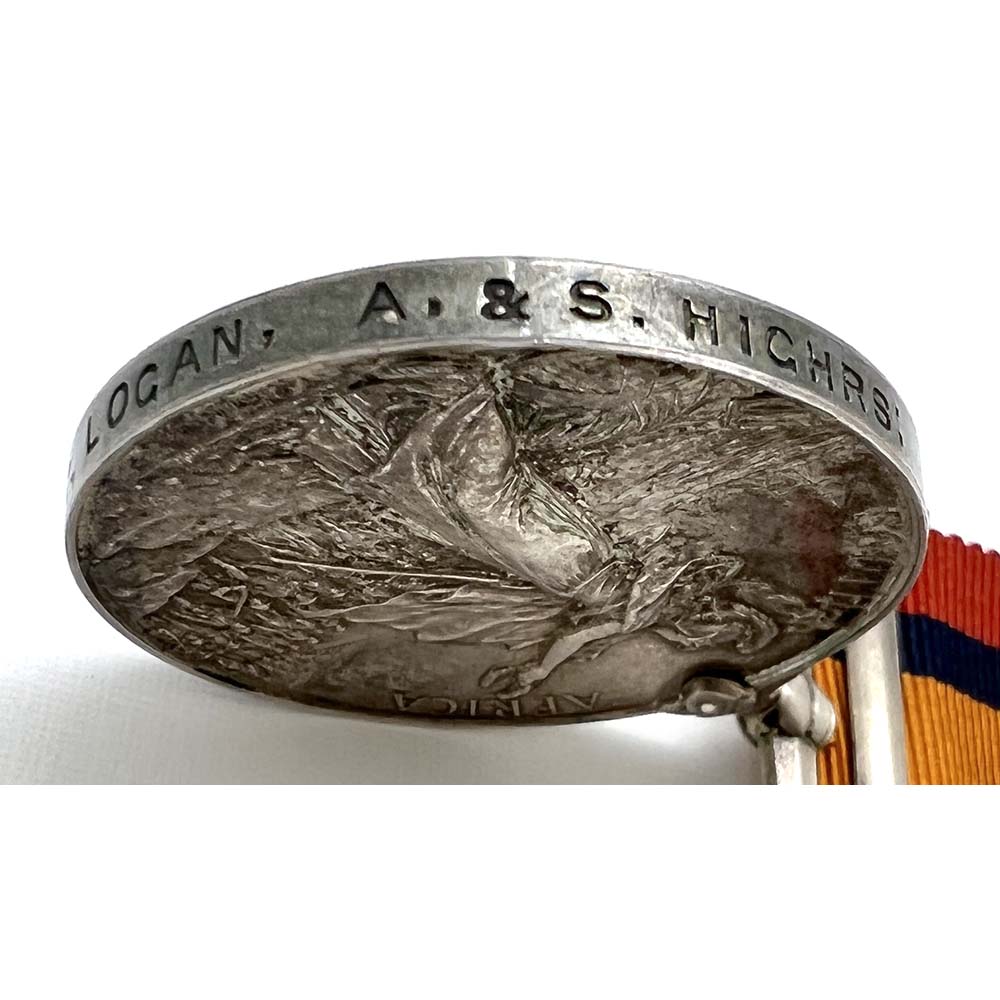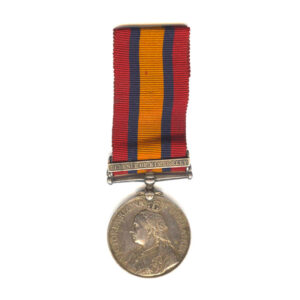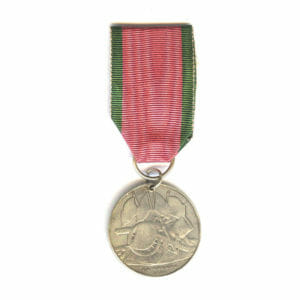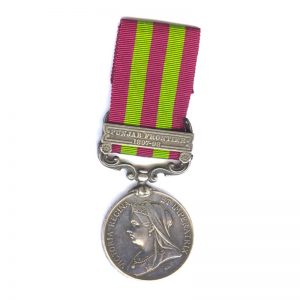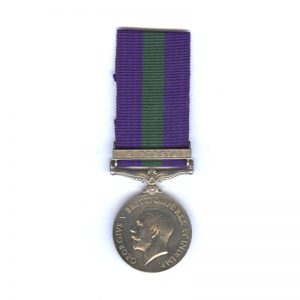Description
Queen’s South Africa Medal, bar Modder River, 6331 Private T. Logan, Argyll and Sutherland Highlanders, killed in action at Magersfontein on 11th December 1899.
Excellent mostly untouched condition with long original silk ribbon.
Officially impressed: “6331 Pte T. Logan, A. & S. Highrs:” An early issue fatal casualty, large style impressing with visible ghost dates.
A Scotsman, Born in Barony, now part of the City of Glasgow. He had worked as a Plumber before attesting for service on 3rd August 1891.
His father John was listed as his next of kin.
Private Logan saw service during the Boer War with the 1st Battalion The Argyll and Sutherland Highlanders, known as “Princess Louise’s”.
He was killed in action at the Battle of Magersfontein on 11th December 1899, fought shortly after Pte Logan had earned his only Battle Bar for Modder River on 28th November 1899.
He is commemorated on the Argyll and Sutherland Highlanders Boer War Memorial at Stirling Castle in Stirling, Scotland.
On this day the British lost 22 officers and 188 Other Ranks killed in action (Pte Logan one of those), with another 46 Officers and 629 ranks being wounded, with 1 Officer and 62 other ranks missing.
Out of these the Highland Brigade bore the brunt of the casualties with 747 men being either killed, wounded or missing.
The Highland Brigade Trapped at Magersfontein where Commanding Officer Lt Col GLJ Goff was shot dead alongside General Wauchope by almost the first volley:
“The Highlanders had advanced to within 400 yards (370 m) of the Boer trenches when the Boers opened fire; the British had no time to reform from their compact quarter columns into a fighting formation.
Wauchope instructed the brigade to extend its order, but in the face of such close-range Boer fire, the changing formation was thrown into disarray and confusion.
General Wauchope was killed by almost the first volley, as was Lieutenant-Colonel G. L. J. Goff, the commanding officer of the Argylls.
The men at the head of the brigade disentangled themselves from the dead and most of them fled. Some of the Black Watch at the head of the column charged the Boer trenches; a few broke through, but as they climbed Magersfontein Hill they were engaged by their own artillery and Boer parties, including one led by General Cronje himself, who had been wandering the kopje since 01:00, and were subsequently killed or captured. Others were shot while entangled in the wire fence in front of the trenches.
Conan Doyle points out that 700 of the British casualties that day occurred in the first five minutes of the engagement.
An attempt was made to outflank the trenches on the right where a number of Boers were taken prisoner, but this action was soon blocked by the redeployment of Boer elements.
After sunrise, the remnants of the four battalions of the Highland Brigade were unable to advance or retreat due to Boer rifle fire. The only movement at that time was a team led by Lt. Lindsay, who managed to bring the Seaforth's Maxim forward to provide a degree of fire support. Later the Lancers were able to bring their Maxim forward and into action as well.
Methuen ordered all available artillery to provide fire support; the howitzers engaged at 4,000 yards (3,700 m) and the three field batteries at a range of 1 mile (1,600 m). The Horse Artillery advanced to the southern flank in an attempt to enfilade the trenches.
With all guns engaged, including the 4.7-inch naval gun commanded by Captain Bearcroft RN, the Highlanders were given some respite from the Boer small-arms fire, and some men were able to withdraw. As with the preliminary barrage of the previous evening, most of the shot was however again directed at the facing slopes of the hills rather than the Boer trenches at their foot.”
